Leonard Girnita, Romania-born associate professor of pathology at Karolinska Institutet in Sweden is under research misconduct investigation. He is Carlo Croce’s academic grandchild.
You all probably heard of Carlo Croce, the infamous cancer cheater from Italy with 11 retractions and over a hundred fraudulent papers on PubPeer, who unsuccessfully sued everyone including the New York Times, his peer critic David Sanders, and his employer Ohio State University, and still wasn’t sacked. Then, Croce himself was sued by his own lawyers for outstanding bills. To get money, this crook announced to mortgage his famous collection of Italian baroque paintings which he boasted to have bought ingeniously cheap. But Smut Clyde suspects that Italian baroque art is most likely fake though, which makes it worthless, i.e. the peddler of fraudulent cancer research became victim of art forgery criminals. Call it karma if you like.
But this story is not about Croce. The Ohio State professor had a postdoc, a Romanian freshly arrived to Croce’s US lab from a PhD in Italy, speaking perfect Italian. That Romanian was George Calin, and Calin convinced his mentor that he discovered something magical. The two men became the foundling fathers of the microRNA (or miRNA) field in oncology, a field which soon exploded into something that gigantic that even Chinese papermills built their business on it. In fact it seems Calin’s fake science done in Croce’s lab indirectly founded the Chinese papermill industry.
There is not much difference in the final outcome between the “original research” in papers by Calin & Croce and what the Chinese papermills deliver to their paying customers: in both cases research results are falsified or fabricated to fit someone’s vision. At least with papermills, no animals are being tortured to produce this fictional science.
But Calin and Croce were torturing mice by letting tumour xenografts grow too big to get the desired result. Everyone looks away, their employers as well as journal publishers: laws and rules don’t apply to science stars like these.
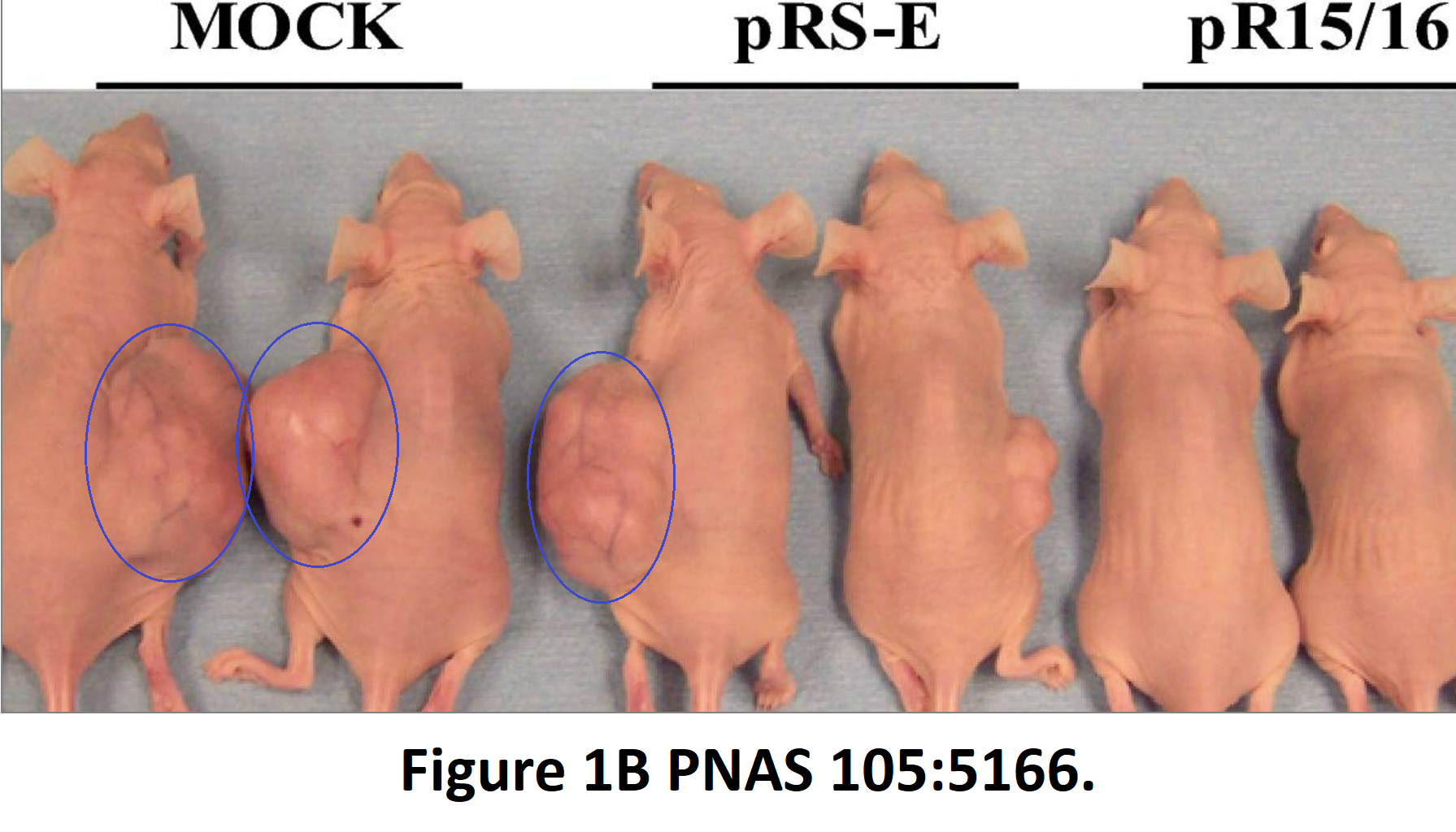
Thanks to his miRNA “discoveries”, Calin became a bigwig himself, working at MD Anderson Cancer Center in Texas, where research fraud is not just common, but produced on a massive industrial scale.
Croce’s lab became a hub for dishonest scientists, mostly from Italy and Romania, seeking to cash in with bad science. The worst offenders are now occupying industry and faculty jobs all over the world, assigning to each other the jobs and research grants you unsuccessfully applied for. Croce’s talent is not just producing fake science, but also establishing the academic mafia networks to place these forgeries in top journals and make sure they won’t get retracted there. Even now, after all the fraud revelations, Croce is still publishing well. Like his recent miRNA papers Pepe et al 2022 in PNAS (where the baroque cheater “contributes” without proper peer review as a US Academy of Sciences member) or Kudo et al 2022 in Cell Death & Differentiation, a rotten Nature Publishing Group outlet run by a bunch of dishonest Italians plus Guido Kroemer.
Calin learned the high art from his master very well, and he in turn taught it to his own mentees. Like Croce, he can shrug of controversies about his work. So what that the results of the seminal Calin-Croce paper in NEJM from 2005 about miRNA in leukaemia were immediately found to be irreproducible – the study went on to be cited almost 1800 times, not all by papermills.
So what that Calin has over 30 papers on PubPeer flagged for fake data, many of those with his MD Anderson cheater colleagues Raghu Kalluri, Anil Sood and Gabriel Lopez-Berestein. At MD Anderson, they will sack you if you don’t fake your research results, and I am not exaggerating. Don’t mess with Texas!
Sometimes, Calin et al were too lazy to use Photoshop even, because Croce gamed the peer review process in top journals so perfectly that he could publish utter trash figures like this:
George Adrian Calin, Calin Dan Dumitru , Masayoshi Shimizu , Roberta Bichi , Simona Zupo , Evan Noch , Hansjuerg Aldler , Sashi Rattan , Michael Keating , Kanti Rai , Laura Rassenti , Thomas Kipps , Massimo Negrini , Florencia Bullrich , Carlo M. Croce Frequent deletions and down-regulation of micro- RNA genes miR15 and miR16 at 13q14 in chronic lymphocytic leukemia Proceedings of the National Academy of Sciences (2002) doi: 10.1073/pnas.242606799

Sure, this miRNA16 data is nothing but trolling, made easily possible because this PNAS paper was “Contributed by Carlo M. Croce“, meaning he organised the peer review of his paper himself. But even in that parody of a research figure, Calin and Croce hid an Easter egg in plain sight, look:
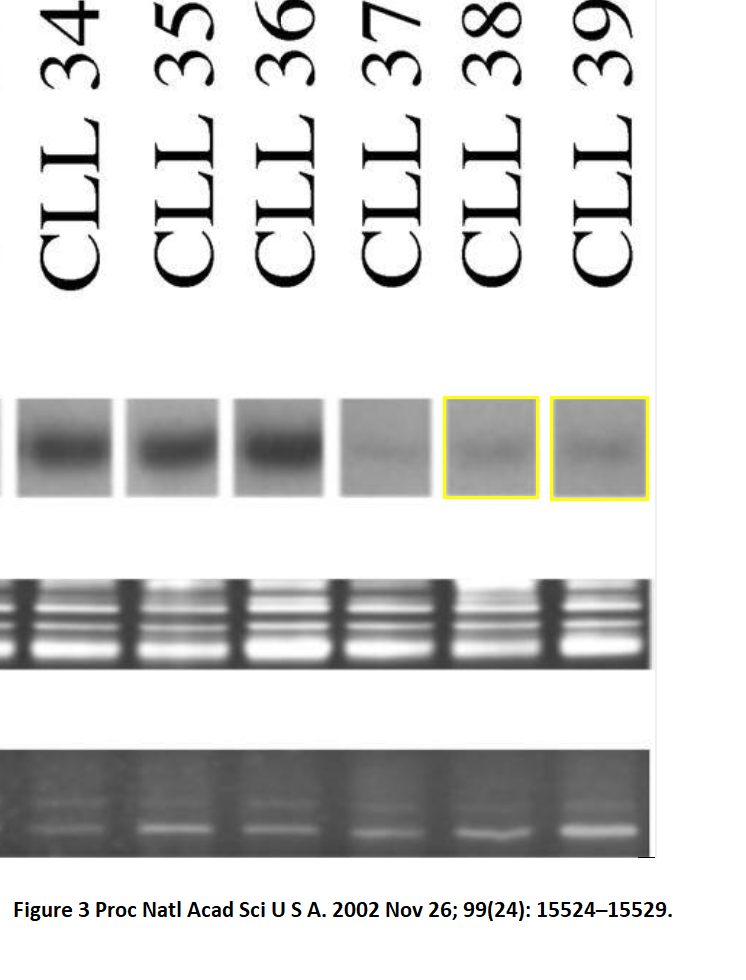
This seminal paper of miRNA in blood cancer was cited over 4000 times (sic!), and mostly not by papermills. Next time someone blathers on about citation metrics as an alleged indicator of reproducibility, tell them about Croce and Calin.
But this story is not about Calin either, because what’s the point. In US academia, as long as a cheater brings in money, he is untouchable (he, because female cheaters live more riskily). And because the cheaters run vast science mafia networks and game the publishing system, they always bring in money.
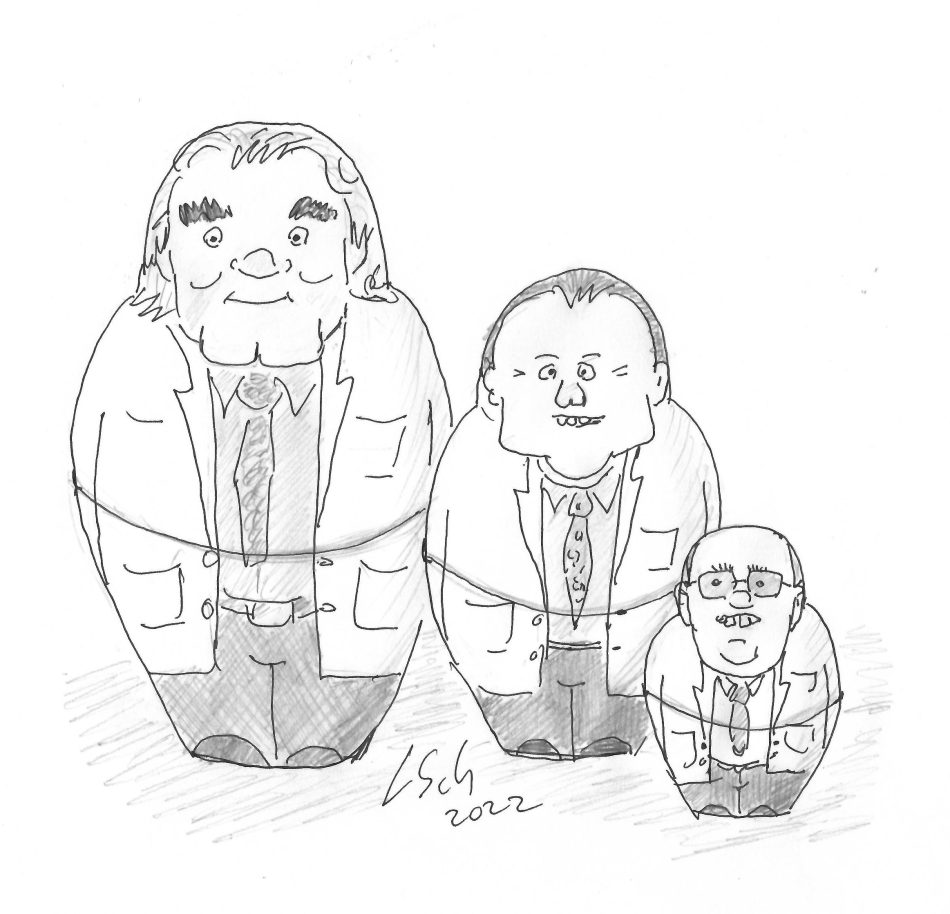
The story is about Calin’s own postdoc, another Romanian named Leonard Girnita, who in 2008 returned to the Karolinska Institutet (KI) in Sweden, with his wife (and regular co-author) Ada Girnita in tow. It was at KI where both Girnitas previously did PhD with Olle Larsson (another co-author on many problematic papers), and where Leonard Girnita now works towards becoming full professor. Girnita’s problem may be that Sweden does mind research fraud. An investigation at the national authority NPOF has began, after pseudonymous sleuth Clare Francis who posted on PubPeer already 25 of his papers for forged data. There could have been more for sure, but the sleuth got bored and moved on to a new target. Feel free to take over.
Have a look at this paper with both Girnitas as PhD trainees of Larsson, announcing the anti-cancer drug Picropodophyllin:

Ada Girnita , Leonard Girnita , Fabrizio Del Prete , Armando Bartolazzi , Olle Larsson , Magnus Axelson Cyclolignans as inhibitors of the insulin-like growth factor-1 receptor and malignant cell growth Cancer Research (2004) doi: 10.1158/0008-5472.can-03-2522
Gel bands cloned and digitally inserted, it seems. It was the foundation paper for a biotech company. The last author Magnus Axelson was until his retirement (or death?) professor of clinical chemistry at KI, where together with Larsson (apparently his son-in-law) he founded in 2003 the now defunct biotech spin-off Axelar (AXELson+LARsson, how clever). The KI spin-off sought to market IGF-1 inhibitors like the picropodophyllin AXL1717 for cancer therapy. Basically, the fake science you see in this article was meant to make Larsson and Axelson rich.
Another example:
Radu Vasilcanu, Daiana Vasilcanu, Bita Sehat , Shucheng Yin , Ada Girnita , Magnus Axelson , Leonard Girnita Insulin-like growth factor type-I receptor-dependent phosphorylation of extracellular signal-regulated kinase 1/2 but not Akt (protein kinase B) can be induced by picropodophyllin Molecular pharmacology (2008) doi: 10.1124/mol.107.040014


Girnita’s Romanian mentees Radu and Daiana Vasilcanu remained in Sweden, where both work in medicine, he is a gynaecologist, and she an oncologist, responsible for medicinal product safety at the Swedish Medical Product Agency. Judging from the quality of their PhD research with Girnita, I am sure Swedish patients can trust this couple fully.
And as for Girnita, that paper was the fanfare to his triumphant return to KI in 2008, generously sponsored as Young Investigator by the Swedish Cancer Society. In this academic youth, Girnita also dabbed in ophthalmology, where he discovered together with KI professor Stefan Seregard a cure for eye melanoma:
Mario A. Economou, Sandra Andersson, Diana Vasilcanu, Charlotta All-Ericsson , Eline Menu , Ada Girnita , Leonard Girnita, Magnus Axelson , Stefan Seregard, Olle Larsson Oral picropodophyllin (PPP) is well tolerated in vivo and inhibits IGF-1R expression and growth of uveal melanoma Investigative Ophthalmology & Visual Science (2008) doi: 10.1167/iovs.07-0819

The melanoma cure with an IGF-1 inhibitor was nothing but Photoshop fraud, yet its efficacy was perfectly reproducible, proven by the fact this paper was published twice, simultaneously but in different journals. All figures and all text are copy-pasted, as it seems without a word changed, also the fake figure with duplicated gel bands was cloned:
Mario A. Economou, Sandra Andersson, Diana Vasilcanu, Charlotta All-Ericsson, Eline Menu, Ada Girnita, Leonard Girnita, Magnus Axelson, Stefan Seregard, Olle Larsson Oral picropodophyllin (PPP) is well tolerated in vivo and inhibits IGF-1R expression and growth of uveal melanoma Acta Ophthalmologica (2008) doi: 10.1111/j.1755-3768.2008.01184.x

But that was of course not the only time when the Girnitas, their PhD mentor Larsson and Seregard published the same paper twice. Here a recycled version of Girnita et al Clin Cancer Res 2006:
Ada Girnita, Charlotta All-Ericsson, Mario A. Economou , Kristina Aström, Magnus Axelson, Stefan Seregard , Olle Larsson, Leonard Girnita The insulin-like growth factor-I receptor inhibitor picropodophyllin causes tumor regression and attenuates mechanisms involved in invasion of uveal melanoma cells Acta Ophthalmologica (2008) doi: 10.1111/j.1755-3768.2008.01183.x

Seregard did not reply to my emails. Maybe this eye doctors need new glasses to see what kind of fraud he published. Like this, more progress in cancer research, again by Seregard and the Girnitas:
Huiyuan Zheng , Claire Worrall , Hongchang Shen , Tarik Issad, Stefan Seregard , Ada Girnita , Leonard Girnita Selective recruitment of G protein-coupled receptor kinases (GRKs) controls signaling of the insulin-like growth factor 1 receptor Proceedings of the National Academy of Sciences (2012) doi: 10.1073/pnas.1118359109





You can find more trash from this productive Girnita-Serensen collaboration on PubPeer.
Back then, KI must have thought themselves lucky to have their genius Girnita back. The man is so amazingly productive, and now we know why. To accompany the previous PNAS paper, here another one, published almost back-to-back and handled by same academic editor Robert Lefkowitz (Nobel Prize laureate, with whom Girnita used to collaborate):
Huiyuan Zheng , Hongchang Shen , Iulian Oprea , Claire Worrall , Radu Stefanescu , Ada Girnita , Leonard Girnita β-Arrestin–biased agonism as the central mechanism of action for insulin-like growth factor 1 receptor–targeting antibodies in Ewing’s sarcoma Proceedings of the National Academy of Sciences (2012) doi: 10.1073/pnas.1216348110




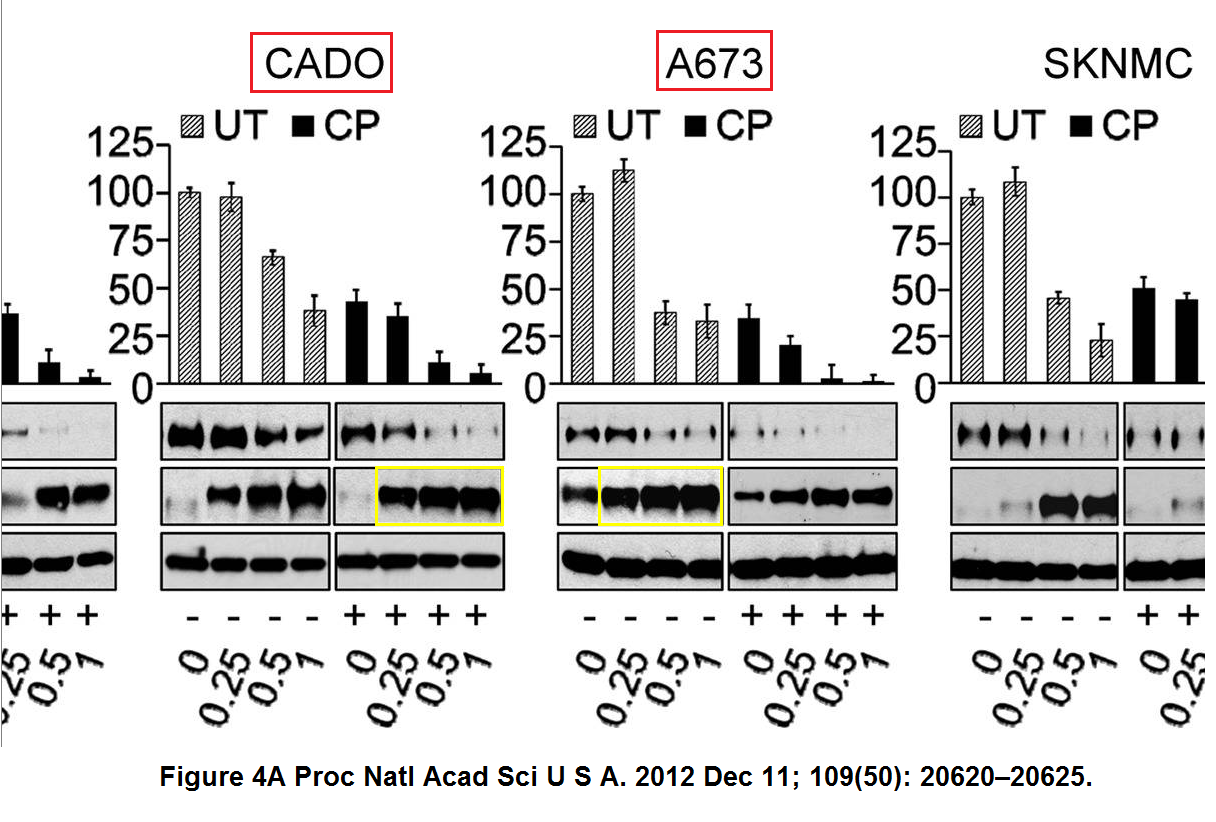
Because of fake science like the above and below, Huiyuan Zheng made it to assistant professor in Girnita’s lab at Karolinska. Here another nice paper from same year, done in collaboration with KI professor of dermatology Mona Ståhle:
A Girnita , H Zheng , A Grönberg , L Girnita , M Ståhle Identification of the cathelicidin peptide LL-37 as agonist for the type I insulin-like growth factor receptor Oncogene (2012) doi: 10.1038/onc.2011.239
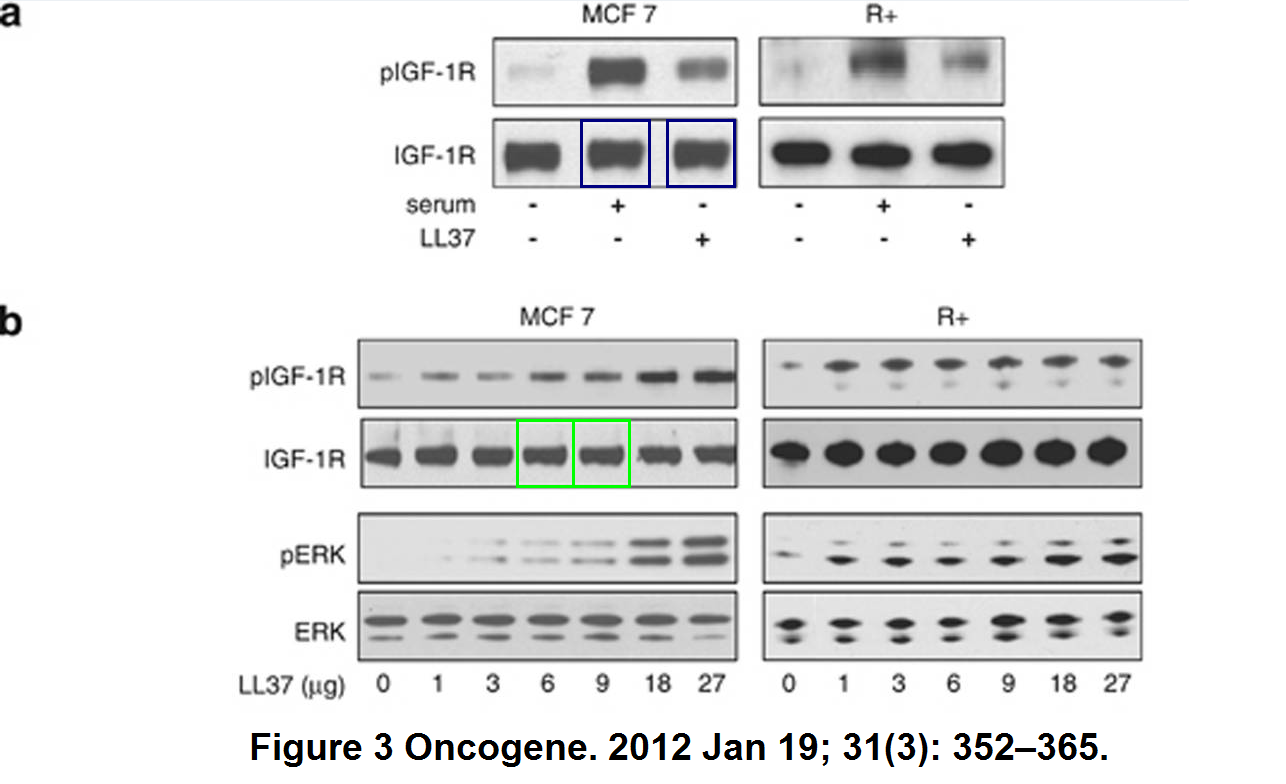

Visit PubPeer for more in that masterpiece.
Now, Clare Francis initially stumbled upon Girnita’s name because he was a co-author on a fake paper by the former KI rector Karin Dahlman-Wright, I wrote a lot about her. Dahlman-Wright was found guilty of misconduct following our notification, but then she sued and won in court. The misconduct findings of KI and NPOF were overthrown, but Dahlman-Wright’s career did not recover, rightly so.
This dishonest scientist, who previously made sure Macchiarini whistleblowers were sentenced for research misconduct, remains at KI as an unsackable professor of endocrinology. A warning to all universities to act on cheaters before they obtain full tenure. Girnita is not a full professor yet.

The extra joke was that the fraudulent Dahlman-Wright/Girnita coproduction Jia et al 2016 was fixed with a correction, despite KI and NPOF having determined it was a “forgery”, the first author and Dahlman-Wright both sanctioned for research misconduct in that very same paper.
Just like Calin was attracted to Croce’s lab because of their shared “values” and “talents”, so was Girnita, freshly graduated at KI in 2002, driven to do postdoc at Calin’s lab at MD Anderson. Girnita brought with him exactly the right talents he learned under Larsson. This could have been the young Romanian’s artistic portfolio to qualify to work for his compatriot in USA, the Croce-trained Calin:
Leonard Girnita, Sudha K. Shenoy , Bita Sehat , Radu Vasilcanu , Ada Girnita , Robert J. Lefkowitz , Olle Larsson {beta}-Arrestin is crucial for ubiquitination and down-regulation of the insulin-like growth factor-1 receptor by acting as adaptor for the MDM2 E3 ligase Journal of Biological Chemistry (2005) doi: 10.1074/jbc.m501129200


Nice fake gels. See the co-author and 2012 Nobel Prize for Chemistry laureate Lefkowitz who later went on to approve two fake PNAS papers by Girnita?
Or how about this PNAS paper with just 3 authors and “Edited by Bert Vogelstein“, another cancer research bigwig I wrote about:

Leonard Girnita, Ada Girnita, Olle Larsson Mdm2-dependent ubiquitination and degradation of the insulin-like growth factor 1 receptor Proceedings of the National Academy of Sciences (2003) doi: 10.1073/pnas.1431613100
Larsson denies all responsibility for his joint PubPeer record with his mentee Girnita, as the former told me in an email:
“I beleive that Dr Girnita may be able to comment on this. You already wrote him. I have not access to the raw data.”
Sure, but what about the papers Larsson published twice as corresponding author? Did this also happen behind his back?
In any case, if Larsson insist to have nothing to do with those fake figures, that particular 3 author paper lists only the Girnita couple. The wife remained silent, the husband wrote to me on 9 May 2022:
“I am aware about my new PubPeer record, and we are in process of retrieving the original data. At this stage I cannot make any comment, however as soon I will get all information I will respond.“
No further comments so far, neither by email nor on PubPeer, neither by Girnita nor by Larsson. But then again the Swedish central authority, the National Board for Assessment of Research Misconduct (NPOF), informed me:
“We are at the moment looking into this emal and the emails we have received from Clare Francis to find out if this shall be handed as one noticiation/case or several.“
While NPOF is investigating, let’s look at a very recent paper by Girnita, featuring his wife Ada, his former mentor Calin, and a bunch of others.
Caitrin Crudden, Takashi Shibano, Dawei Song , Mihnea P. Dragomir , Sonia Cismas, Julianna Serly, Daniela Nedelcu, Enrique Fuentes-Mattei , Andrei Tica , George A. Calin , Ada Girnita, Leonard Girnita Inhibition of G Protein-Coupled Receptor Kinase 2 Promotes Unbiased Downregulation of IGF1 Receptor and Restrains Malignant Cell Growth Cancer Research (2021) doi: 10.1158/0008-5472.can-20-1662
In November 2020, KI issued a press release that their scientists found a cure for childhood leukaemia:
“A new study has found that a commonly prescribed anti-depressant may halt growth of a type of cancer known as childhood sarcoma, at least in mice and laboratory cell experiments.” […]
“We have developed a novel strategy to control the activity of these tumour-driving receptors by striking the GPCRs,” says Leonard Girnita, researcher in the Department of Oncology-Pathology, Karolinska Institutet, and principle investigator of the study. “To our knowledge this represents a new paradigm for the entire class of cancer-relevant RTKs and could be used as a starting point for the rational design of specific therapeutics in virtually any pathological conditions.”
And here is what was wrong with that paper:


What would you call scientists who use rigged research data to issue promises of cures to vulnerable parents of cancer-stricken children? But wait, all is fine, because the first author Caitrin Crudden (last listed as postdoc at VU Amsterdam in the Netherlands) wrote to me:
“I do not currently work at the VU. I am aware of the recent PubPeer comment pertaining to my work, and have been in contact with the responsible journal editor at Cancer Research. Having now provided all necessary raw data and experimental evidence, as it currently stands the editor is satisfied that duplications in this instance were genuine mistakes and neither change any conclusions reported in the original paper, nor misrepresent true data.“
I don’t know which editor Crudden spoke to, but there are several known cheaters on Cancer Research‘s editorial board. One of the senior editors is Calin, surely a conflict of interests? One of advisory chief editors is Bert Vogelstein whom you met before (read about his science and his attitude here).
Another advisory chief editor is Karen Vousden (read about her questionable science here).
Paul B Fisher is Editor for “Breaking Insights“, and you can have breaking insights into his science here.
And the deputy editor for “Controversy and Consensus” is none other but Calin’s fraud-peddling collaborator at MD Anderson, Raghu Kalluri, how very funny.
These people want to make us think Crudden et al are saving the lives of children with leukamia. And I can take any bet that this very recent Oncogene paper by Girnitas and Crudden won’t be retracted either:
Dawei Song, Sonia Cismas, Caitrin Crudden, Eric Trocme , Claire Worrall, Naida Suleymanova, Tingting Lin , Huiyuan Zheng, Stefan Seregard, Ada Girnita, Leonard Girnita IGF-1R is a molecular determinant for response to p53 reactivation therapy in conjunctival melanoma Oncogene (2022) doi: 10.1038/s41388-021-02111-x
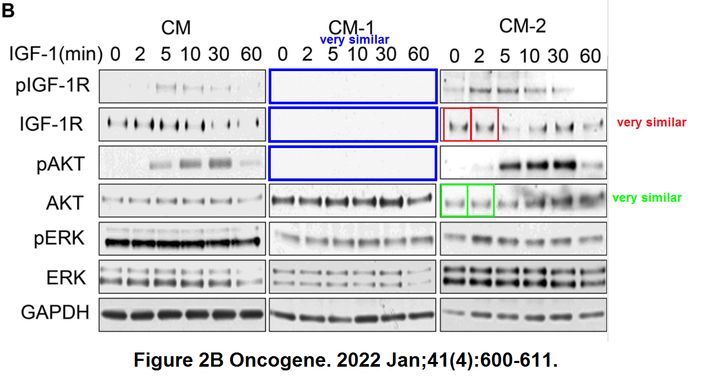
Here, Crudden remained silent, also Seregard didn’t reply. Which is a pity because they discovered a cure for yet another eye melanoma, surely the Photoshop fraud did not affect any conclusions there? Of course it didn’t.
The Editor-in-Chief of Oncogene was, is, and will always be Justin Stebbing, who not only was forced to retract his own fake science, but sanctioned last year for scamming terminally ill cancer patients.
While you think of expletives to describe these cancer researchers, here more by Girnita, together with his own former PhD supervisor Larsson, incidentally also in Oncogene:
Yuntao Xie , Maria Törnkvist , Yan Aalto , Gunnar Nilsson, Leonard Girnita , Bálint Nagy , Sakari Knuutila, Olle Larsson Gene expression profile by blocking the SYT-SSX fusion gene in synovial sarcoma cells. Identification of XRCC4 as a putative SYT-SSX target gene Oncogene (2003) doi: 10.1038/sj.onc.1207153
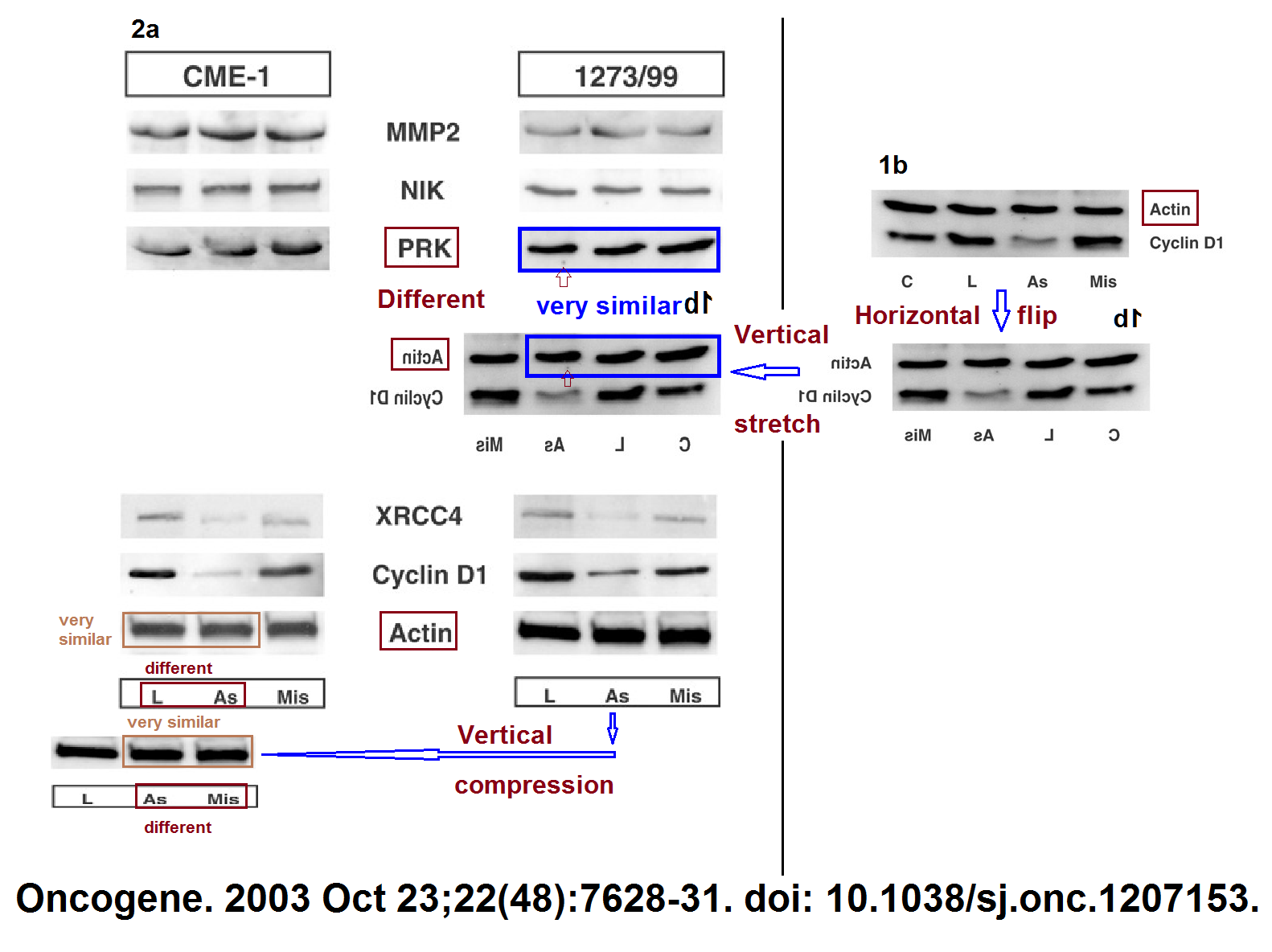
More in Oncogene, remember the Vasilcanu couple?
R Vasilcanu , D Vasilcanu , L Rosengren , N Natalishvili , B Sehat , S Yin , A Girnita , M Axelson , L Girnita , O Larsson Picropodophyllin induces downregulation of the insulin-like growth factor 1 receptor: potential mechanistic involvement of Mdm2 and beta-arrestin1 Oncogene (2008) doi: 10.1038/sj.onc.1210797

Or in Cancer Research, where no conclusion will be ever found to be affected:
Bita Sehat , Sandra Andersson , Leonard Girnita , Olle Larsson Identification of c-Cbl as a new ligase for insulin-like growth factor-I receptor with distinct roles from Mdm2 in receptor ubiquitination and endocytosis Cancer Research (2008) doi: 10.1158/0008-5472.can-07-6364


The last author and Girnita’s Phd mentee Bita Sehat (whose name you saw on several papers discussed above) is now a biotech investor. To be fair, one can indeed make the biggest money with fake science if you sell fast enough.
Speaking of biotechs. Larsson’s and Axelson’s company Axelar tanked because their IGF-1 inhibitor AXL1717 didn’t work, as they had to admit after five phase 1 clinical trials (one of those in Belarus!) and a failed phase 2 clinical trial in 2013:
“The final data showed no statistically significant difference in rate of progression-free survival (PFS) between the patients treated with AXL1717 compared with the group treated with docetaxel, which confirms the previously communicated preliminary data.”
The €13.7 million Axelar raised (much of it from KI) went up in a puff of smoke. All that Photoshop fraud didn’t help, who would have known.
Maybe Girnita will now fall where Croce and Calin kept standing. I will update you about the NPOF investigation.
I thank all my donors for supporting my journalism. You can be one of them!
Make a one-time donation:
I thank all my donors for supporting my journalism. You can be one of them!
Make a monthly donation:
Choose an amount
Or enter a custom amount
Your contribution is appreciated.
Your contribution is appreciated.
DonateDonate monthly

This report by Leonid is mind-blowing, and shows how much f*** up research really is.
The protagonists of this story are well known names from elite institutions in wealthy countries, who are regularly publishing in high profile journals.
If this crap occurs there, you can imagine the proportion of fake data produced in smaller institutions, in less wealthy countries, and in low profile journals.
I cannot predict the percentage, but… what is the overall amount of dodgy science worldwide? 20, 30, 50 or more percent?
LikeLike
I’d guess that at least 90% of published science is fake. Honest science mostly ends up in the drawer because it contradicts the published fraudulent trash.
LikeLike
I’m thinking about 25% of all papers contain at least one instance of purposely modified data with the intent to deceive. If you count in all the stuff that was poorly done (not enough replicates, not enough controls) and renders false positives its up to I think 90%.
I spent some time in my last gig to learn how to do a Western blot properly. The review articles that I read suggested you should do a concentration of lysate titration as a standard curve whenever possible, which makes a lot of sense since when you look at signal versus concentration there are huge deviations from linearity. Practically NOBODY who does a western blot with this done, at least as suggested in materials and methods. And my PI advisor screamed at me that I was waisting time and money.
In academic science, promotion of ones self is everything, honesty and doing things carefully are way down the list.
LikeLike
Reply to NMH, the failed scientist and incel
May 31, 2022
“In academic science, promotion of ones self is everything, honesty and doing things carefully are way down the list.”
Along the same lines I doubt the funders/charities will be bothered by the fraudulent “science”.
All they care about is their, often high, salaries, and justify their high salaries by the amount of money the public donates. Big bosses command big salaries. Harpal Kumar ex-CEO of CRUK, is on record.
No docking of their salaries for money badly spent.
LikeLike
” working at MD Anderson Cancer Center in Texas, where research fraud is not just common, but produced on a massive industrial scale.”
https://faculty.mdanderson.org/profiles/kapil_bhalla.html
Problematic data Kapil Bhalla
https://pubpeer.com/search?q=kapil+bhalla
MD Anderson Cancer Center laps up the fraudulent “science”.
LikeLike
” working at MD Anderson Cancer Center in Texas, where research fraud is not just common, but produced on a massive industrial scale.”
https://faculty.mdanderson.org/profiles/paul_chiao.html
Problematic data
https://pubpeer.com/search?q=paul+j+chiao
LikeLike
” working at MD Anderson Cancer Center in Texas, where research fraud is not just common, but produced on a massive industrial scale.”
https://faculty.mdanderson.org/profiles/cullen_taniguchi.html
Retraction as first author.
https://www.jci.org/articles/view/90689
Retraction as middle of three authors.
https://www.jbc.org/article/S0021-9258(20)34411-2/fulltext
Pubpeer record.
https://pubpeer.com/search?q=cullen+taniguchi
LikeLike
https://medicine.duke.edu/medicinenews/md-andersons-james-abbruzzese-selected-chief-division-medical-oncology
Whatever you do, don’t mention the retractions!
https://pubpeer.com/search?q=james+abbruzzese
LikeLike
“Leonard Girnita, Sudha K. Shenoy , Bita Sehat , Radu Vasilcanu , Ada Girnita , Robert J. Lefkowitz , Olle Larsson {beta}-Arrestin is crucial for ubiquitination and down-regulation of the insulin-like growth factor-1 receptor by acting as adaptor for the MDM2 E3 ligase Journal of Biological Chemistry (2005) doi: 10.1074/jbc.m5011292002
By the way, penultimate author is: https://en.wikipedia.org/wiki/Robert_Lefkowitz
2012 Nobel Prize for Chemistry
2022 retraction for Robert J Lefkowitz.
https://pubpeer.com/publications/82986F4A4D89EA465E822A9809F154
LikeLike
Missed that with Nobel Prize, thanks! Does it mean the two PNAS papers by Girnita can’t be fake because a Nobelist gave his blessings?
LikeLike
“To accopmany the previous PNAS paper, here another one, publsihed almost back-to-back and handled by same academic editor Robert Lefkowitz (with whom Girnita used to collaborate):
Huiyuan Zheng , Hongchang Shen , Iulian Oprea , Claire Worrall , Radu Stefanescu , Ada Girnita , Leonard Girnita β-Arrestin–biased agonism as the central mechanism of action for insulin-like growth factor 1 receptor–targeting antibodies in Ewing’s sarcoma Proceedings of the National Academy of Sciences (2012) doi: 10.1073/pnas.1216348110”
https://en.wikipedia.org/wiki/Nobel_Committee
“A Nobel Committee is a working body responsible for most of the work involved in selecting Nobel Prize laureates. There are five Nobel Committees, one for each Nobel Prize.
Four of these committees (for prizes in physics, chemistry, physiology or medicine, and literature) are working bodies within their prize awarding institutions, the Royal Swedish Academy of Sciences, Karolinska Institutet, and the Swedish Academy.”
Some kind of inside job going between Robert J Lefkowitz and the Karolinska Institute.
I don’t mean about the PNAS paper, but about Robert J Lefkowitz’s 2012 Nobel Prize.
Lefkowitz’s 2022 retrction was the lead to Girnita.
https://pubpeer.com/publications/82986F4A4D89EA465E822A9809F154
Search for RJ Lefkowitz, and bingo!, Leonard Girnita comes up!
LikeLike
Just like Kathryn Ball and Ted Hupp may very well feel like kissing David Argyle on both cheeks,
Ada and Leonard Girnita may very well feel like kissing Robert J Lefkowitz on both cheeks!
Funny old world!
Here is the kissing bit.
https://forbetterscience.com/2021/12/21/the-hupp-and-ball-game/
LikeLike
All the employees of the Karolinska Institute cannot be stupid.
Surely, some of them realised what was going on? The problematic papers date from 2003 until 2022.
I wonder if some of them have raised scientific concerns about the Girnitas only to be silenced.
LikeLike
“I don’t know which editor Crudden spoke to, but there are several known cheaters on Cancer Research‘s editorial board.”
https://aacrjournals.org/cancerres/pages/editors
Advisory Editors
Joan S. Brugge
https://pubpeer.com/search?q=joan+brugge
Senior Editors
Giulio F. Draetta
https://pubpeer.com/search?q=Giulio+Draetta
Brendan D. Manning
https://pubpeer.com/search?q=brendan+manning
Molecular Cell Biology
Saraswati Sukumar
https://pubpeer.com/search?q=Saraswati+Sukumar
LikeLike
Ada Girnita is a regular sofa-warmer for Swedish state television and state radio (you have to imagine the sofa on radio).
https://www.svt.se/nyheter/inrikes/hudlakaren-man-ska-vara-ute-men-inte-branna-sig
With pearls of wisdom such as don’t burn yourself when you go outside.
https://www.svt.se/nyheter/inrikes/i-1
or, that the risk of developing skin cancer increases if you sunbathe a lot, but at the same time says that it is difficult to define the concept of “a lot”.
https://sverigesradio.se/avsnitt/714806
or, warning about dark skin spots becoming malignant melanoma
I wonder if Swedish state television knew what was sitting on their sofas.
Same goes for TV4
A 2021 Karolinska University Hospital video spouting more platitudes.
Could the Karolinska Institute Hospital leadership give an accurate description of what is front of their video camera?
LikeLike
I think there is going to be a lot of screaming and shouting between the leadership of the Karolinska Institute and the Girnitas.
I looked up the Swedish word for shouting, “Shrika”, which is so like the English word shriek that we must have got that word from Old Norse, just like the Swedes.
The word for screaming is also “Shrika”.
Screaming and shouting is a repetition of the same word, likely for the alliteration and for emphasis.
LikeLike
“You can find more trash from this productive Girnita-Serensen collaboration on PubPeer.”
Don’t you mean Girnita-Seregard?
https://pubpeer.com/search?q=girnita+seregard
LikeLiked by 1 person
Invest Ophthalmol Vis Sci. 2008 Jun;49(6):2620-6.
doi: 10.1167/iovs.07-0742.
Inhibition of VEGF secretion and experimental choroidal neovascularization by picropodophyllin (PPP), an inhibitor of the insulin-like growth factor-1 receptor
Mario A Economou 1 , Jiangmei Wu, Daiana Vasilcanu, Linda Rosengren, Charlotta All-Ericsson, Ingeborg van der Ploeg, Eline Menu, Leonard Girnita, Magnus Axelson, Olle Larsson, Stefan Seregard, Anders Kvanta
Affiliations
Affiliation
https://pubpeer.com/publications/CFD26861220A064B9E308DC7AD29F9#2
Figure 4A. Much more similar than expected. Also, sharp vertical, and horizontal changes in background.
LikeLike
Invest Ophthalmol Vis Sci. 2004 Jul;45(7):2075-82.
doi: 10.1167/iovs.03-1196.
c-Kit-dependent growth of uveal melanoma cells: a potential therapeutic target?
Charlotta All-Ericsson 1 , Leonard Girnita, Anja Müller-Brunotte, Bertha Brodin, Stefan Seregard, Arne Ostman, Olle Larsson
Affiliation
1
St. Erik’s Eye Hospital, Stockholm, Sweden.
PMID: 15223779 DOI: 10.1167/iovs.03-1196
https://pubpeer.com/publications/947E999AE8DF8151B71263E8FBAEB9#2
Figures 3a and 3c. Much more similar and different than expected.
Figure 5a. Much more similar than expected.
https://pubpeer.com/publications/947E999AE8DF8151B71263E8FBAEB9#1
LikeLike
So many breakthroughs in top journals, so much money invested… and still, there are several examples of cancer whose mortality has not improved compared to 60-70 years back. See https://gco.iarc.fr/overtime/en/dataviz/
LikeLike
As Bert Vogelstein said, he can cure cancer in mice but not in humans. Either because the Book of Genesis is right and humans have no evolutionary relationship to other mammals, or Vogelstein’s mouse research is phony bullahit.
LikeLike
Retraction for Leonard Girnita!
https://www.nature.com/articles/s41388-022-02567-5
LikeLike
Is the Karolinska Institute competent to judge who is eligible for 4 out of the 5 Nobel Prizes if it cannot detect fraud within its own walls?
It might be best if the Karolinska Institute stand aside from selecting Nobel Prize candidates until there has been a thorough audit of its own “scientific output”? Maybe put the Nobel Prizes on hold until that has been achieved.
My suggestion is that the Karolinska Institute engage (that means pay) Elisabeth Bik to audit its “scientific output”.
LikeLike
What do you mean?
https://forbetterscience.com/2020/10/07/gregg-semenza-real-nobel-prize-and-unreal-research-data/
LikeLike
Oncogene. 2017 Jun 8; 36(23): 3274–3286.
Published online 2017 Jan 16.
doi: 10.1038/onc.2016.472
PMCID: PMC5474566 PMID: 28092675
Unbalancing p53/Mdm2/IGF-1R axis by Mdm2 activation restrains the IGF-1-dependent invasive phenotype of skin melanoma
C Worrall,1 N Suleymanova,1 C Crudden,1 I Trocoli Drakensjö,1,2 E Candrea,1,3 D Nedelcu,1 S-I Takahashi,4 L Girnita,1, and A Girnita1,2,Author information 1Department of Oncology and Pathology, Cancer Center Karolinska, Karolinska Institute, Karolinska University Hospital, Stockholm, Sweden2Dermatology Department, Karolinska University Hospital, Stockholm, Sweden3Department of Dermatology, University of Medicine and Pharmacy ‘Iuliu Hatieganu’, Cluj-Napoca, Romania4Departments of Animal Sciences and Applied Biological Chemistry, Graduate School of Agriculture and Life Sciences, The University of Tokyo, Tokyo, Japan*Department of Oncology-Pathology, Cancer Center Karolinska, Karolinska Institute, Karolinska University Hospital, CCK R8:04, Stockholm S-17176, Sweden.
E-mail: Leonard.Girnita@ki.se or Ada.Girnita@ki.se
Problematic data figure 5a. Much more similar after vertical flip than expected.
LikeLike
Leonard and Ada Girnita seem to have the reverse Midas touch.
Which of their experimental papers does not have problematic data?
LikeLiked by 1 person
I found which paper became the foundation of Axelar and its failed product Picropodophyllin (AXL1717).
Ada Girnita, Leonard Girnita, Fabrizio Del Del Prete , Armando Bartolazzi, Olle Larsson, Magnus Axelson

Cyclolignans as inhibitors of the insulin-like growth factor-1 receptor and malignant cell growth
Cancer Research (2004) doi: 10.1158/0008-5472.can-03-2522
KI invested many millions into this company and their phony drug.
LikeLike
There is an AstraZeneca exec in Stockholm by the name of Lena Axelson-Larsson. Which means she is the wife of Olle Larsson and daughter of Magnus Axelson.
https://www.linkedin.com/in/lena-axelson-larsson-5057a024/?originalSubdomain=se
LikeLike
Additional problematic data Cancer Res . 2004 Jan 1;64(1):236-42.
Problematic data figure 3A.
IGF-1R pTyr panel. Vertical changes in background.
IGF-1R- beta panel. No vertical changes in background.
LikeLike
“KI invested many millions into this company and their phony drug.”
Fool and his money easily parted, except a lot of the money will be from public funds. Not so funny then.
LikeLike
The Karolinksa Institute, like any other institute, could get its Pubpeer Dashboard here:
https://pubpeer.com/institutions
This would allow it to see what people are saying about its publications, and take some action.
LikeLike
“Yuntao Xie , Maria Törnkvist , Yan Aalto , Gunnar Nilsson, Leonard Girnita , Bálint Nagy , Sakari Knuutila, Olle Larsson Gene expression profile by blocking the SYT-SSX fusion gene in synovial sarcoma cells. Identification of XRCC4 as a putative SYT-SSX target gene Oncogene (2003) doi: 10.1038/sj.onc.1207153 ”
To extend the tapestry of nonsense.
https://pubpeer.com/publications/C0176C92187A5FA02447796AF8C883
LikeLike
Data in Acta Ophthalmol. 2008 Nov;86 Thesis 4:35-41
very similar to data in Invest Ophthalmol Vis Sci. 2008 Jun;49(6):2337-42
in turn very similar to data in Cancer Res. 2008 Jul 15;68(14):5669-77.
LikeLike
Endocrinology . 2007 Jan;148(1):128-39. doi: 10.1210/en.2006-0835. Epub 2006 Oct 5.
Insulin-like growth factor-I is an important antiapoptotic factor for rat leydig cells during postnatal development
Eugenia Colón 1, Farasat Zaman, Magnus Axelson, Olle Larsson, Christine Carlsson-Skwirut, Konstantin V Svechnikov, Olle Söder
Affiliation1
Department of Woman and Child Health, Paediatric Endocrinology Unit, Astrid Lindgren Children’s Hospital, Karolinska Institute and University Hospital, SE 17176 Stockholm, Sweden.
eugenia.colon@ki.se
PMID: 17023532 DOI: 10.1210/en.2006-0835
Problematic data figure 8IIA. Much more similar than expected.
LikeLike
No Girnitas on that paper. But Magnus Axelson and his son-in-law, Olle Larsson.
LikeLike
Additional problematic data Endocrinology . 2007 Jan;148(1):128-39. doi: 10.1210/en.2006-0835. Epub 2006 Oct 5.
Problematic data figure 7. Much more similar and different than expected.
LikeLike
Yet more problematic data Endocrinology . 2007 Jan;148(1):128-39. doi: 10.1210/en.2006-0835. Epub 2006 Oct 5.
More problematic data figure 7. Much more similar than expected.
LikeLike
Little bit more problematic data Endocrinology . 2007 Jan;148(1):128-39. doi: 10.1210/en.2006-0835. Epub 2006 Oct 5.
Figures 7IC and 8IC much more similar than expected after vertical stretch.
LikeLike
Int. J. Cancer:121,1857–1861 (2007). https://doi.org/10.1002/ijc.22845
SHORT REPORT.
Targeting the IGF-1R using picropodophyllin in the therapeutical 5T2MM mouse model of multiple myeloma: Beneficial effects on tumor growth,angiogenesis, bone disease and survival
Eline Menu 1*, Helena Jernberg-Wiklund 2, Hendrik De Raeve 3, Evy De Leenheer 4, Les Coulton 4, Orla Gallagher 4,Els Van Valckenborgh 1, Olle Larsson 5, Magnus Axelson 6, Kenneth Nilsson 2, Ben Van Camp 1, Peter Croucher 4 and Karin Vanderkerken 1
1 Department of Hematology and Immunology, Vrije Universiteit Brussel—VUB, Brussels, Belgium
2 Department of Genetics and Pathology, Rudbeck Laboratory, Uppsala University, Uppsala, Sweden
3 Department of Pathology, University of Antwerp, Antwerp, Belgium
4 Academic Unit of Bone Biology, University of Sheffield, Medical School, Sheffield, United Kingdom
5 Cancer Center Karolinska, Karolinska Institute, Stockholm, Sweden
6 Department of Clinical Chemistry, Karolinska Hospital, Stockholm, Sweden.
Problematic data figure 1a. Much more similar than expected.
LikeLike
Clin Cancer Res (2012) 18 (8): 2230–2239.
https://doi.org/10.1158/1078-0432.CCR-11-1764
The HDAC Inhibitor LBH589 Enhances the Antimyeloma Effects of the IGF-1RTK Inhibitor Picropodophyllin
Miguel Lemaire 1 , Charlotte Fristedt 2 , Prasoon Agarwal 2 , Eline Menu 1 , Els Van Valckenborgh 1 , Elke De Bruyne 1 , Anders Osterborg 3 , Peter Atadja 6 , Olle Larsson 4 , Magnus Axelson 5 , Ben Van Camp1 , Helena Jernberg-Wiklund 2 , and Karin Vanderkerken 1
Authors’ Affiliations:
1 Department of Hematology and Immunology, Myeloma Center Brussels, Vrije Universiteit Brussel, Belgium;
2 Department of Immunology, Genetics and Pathology, Rudbeck Laboratory, Uppsala University, Uppsala, Sweden;
3 Department of Hematology, Karolinska University Hospital Solna;
4 Department of Oncology and Pathology, Cancer Center Karolinska, Karolinska Institute;
5 Department of Clinical Chemistry, Karolinska Hospital, Stockholm, Sweden; and
6 Novartis Institute for Biomedical Research, Cambridge, Massachusetts.
Problematic data figures 4B and 4D. Much more similar after horizontal and vertical resizing than expected.
LikeLike
Med Oncol (2015) 32:188 DOI 10.1007/s12032-015-0630-y
Picropodophyllin inhibits proliferation and survival of diffuse large B-cell lymphoma cells Thomas Stro ̈ mberg 1 • Xiaoying Feng 2,3 • Maryam Delforoush 1 • Mattias Berglund 1 • Yingbo Lin 2 • Magnus Axelson 4 • Olle Larsson 2 • Patrik Georgii-Hemming 1 • Johan Lennartsson 5 • Gunilla Enblad 1
Maryam Delforoush Maryam.Delforoush@onkologi.uu.se
1 Department of Immunology, Genetics and Pathology, Rudbeck Laboratory, Uppsala University, 751 85 Uppsala, Sweden
2 Department of Oncology-Pathology, Cancer Center Karolinska, Karolinska Institutet, 17176 Stockholm, Sweden
3 Department of Gastroenterology, The Second Affiliated Hospital of Dalian Medical University, Dalian 116027, People’s Republic of China
4 Department of Clinical Chemistry, Karolinska Institutet and Karolinska University Hospital, 17176 Stockholm, Sweden
5 Ludwig Institute for Cancer Research, Uppsala University, 751 24 Uppsala, Sweden
Problematic data figure 4. Different number of lanes for total and phosphorylated samples.
LikeLike
Blood. 2010 Mar 25;115(12):2430-40. doi: 10.1182/blood-2009-07-232801. Epub 2010 Jan 19.
IGF-1 suppresses Bim expression in multiple myeloma via epigenetic and posttranslational mechanisms
*Elke De Bruyne, 1 *Tomas J. Bos, 1 Frans Schuit, 2 Els Van Valckenborgh, 1 Eline Menu, 1 Lieven Thorrez, 2 Peter Atadja, 3 Helena Jernberg-Wiklund, 4 and Karin Vanderkerken 1
1 Department of Hematology and Immunology, Vrije Universiteit Brussel, Brussels, Belgium;
2 Department of Molecular Cell Biology, Katholieke Universiteit Leuven, Leuven, Belgium;
3 Novartis Institute for Biomedical Research Cambridge, Cambridge, MA; and
4 Department of Genetics and Pathology, Rudbeck Laboratory, Uppsala University, Uppsala, Sweden.
PMID: 20086250
Problematic data figure 2. Much more similar and different than expected.
LikeLike
Blood . 2012 Jan 19;119(3):826-37.
doi: 10.1182/blood-2011-07-366492. Epub 2011 Nov 29.
Activation of ATF4 mediates unwanted Mcl-1 accumulation by proteasome inhibition
Jinsong Hu 1 , Nana Dang, Eline Menu, Elke De Bruyne, Dehui Xu, Ben Van Camp, Els Van
Affiliation
Problematic data figure 6F. Much more similar than expected.
LikeLike